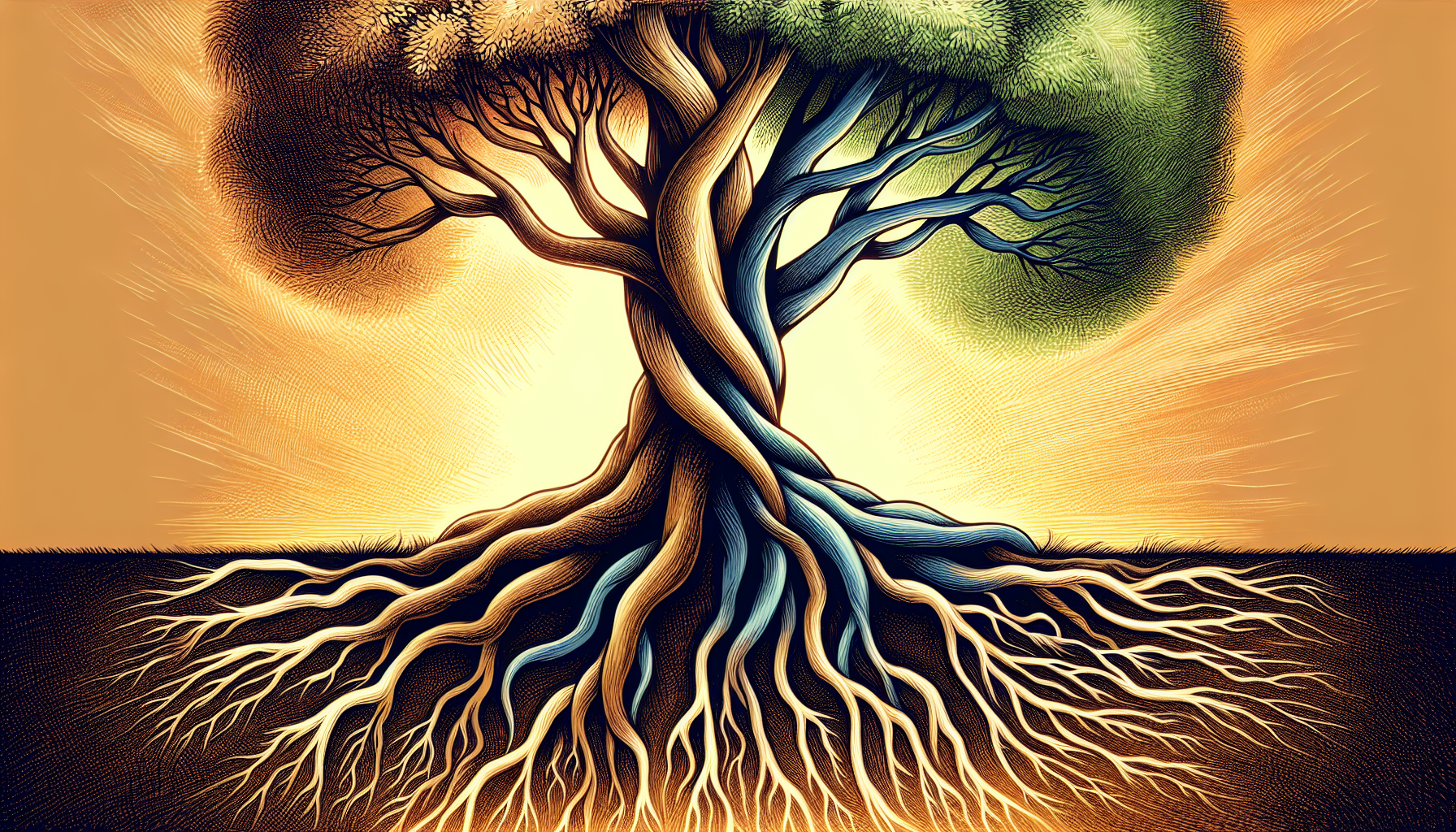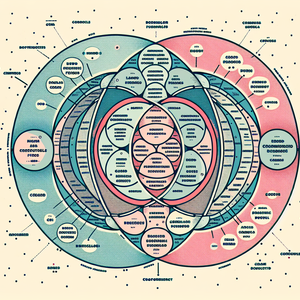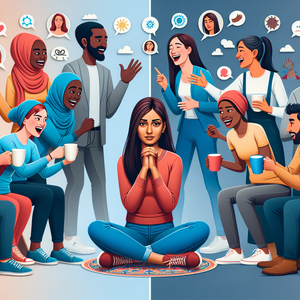Unseen Boundaries: The Surprising Impact of State Lines on Culture

One of the most striking manifestations of cultural variation across state lines is found in language. American English is replete with regional dialects and accents that can shift significantly within short distances. For instance, the "Midwestern" accent is typified by flat vowel sounds, while Southern accents encompass a wide range of characteristics, from the slow drawl of a Texan to the melodic intonations of a Georgian. A quintessential example lies in the lexicon used for soft drinks. In the Midwest, the term "pop" is prevalent, whereas in the South, many will refer to any soft drink as "Coke," regardless of the brand. These linguistic differences are not merely semantic; they embody cultural identity and foster a sense of community. The border between Ohio and Pennsylvania, for example, showcases a fascinating blend of Midwestern and Northeastern dialects, illustrating how close proximity can lead to cultural fusion and shared linguistic heritage.
Culinary Traditions: A Taste of Place
Food serves as another essential marker of cultural identity that varies dramatically across state lines. The culinary landscape of the U.S. is a vibrant reflection of its diverse immigrant populations, agricultural practices, and indigenous traditions. In Louisiana, the melding of French, African, and Spanish cuisines has resulted in the rich, complex flavors of Cajun and Creole dishes. In contrast, just across the border in Texas, barbecue is a central culinary tradition, renowned for its smoked brisket and diverse styles of salsa. To illustrate this further, consider New Mexico's celebrated green chile compared to Arizona's emphasis on salsas. Both states share a Southwestern culinary heritage, yet their flavor profiles and preparation methods differ significantly. These culinary distinctions do more than satisfy local palates; they cultivate a sense of pride and identity among residents, reinforcing the notion that food is an integral component of cultural heritage.
Festivals and Traditions: Celebrating Local Identity
State borders also dictate the festivals and traditions that flourish within their confines, creating unique communal experiences. This can lead to friendly rivalries, as seen in the annual Red River Rivalry college football game between Texas and Oklahoma, where local pride is on full display. In contrast, states like Massachusetts and Rhode Island honor their distinct histories through local celebrations, such as the Newport Jazz Festival in Rhode Island or the reenactments of the Boston Tea Party in Massachusetts. These events not only provide an opportunity for residents to engage with their local culture but also showcase the unique characteristics of each state. The differences in celebration styles—like Texas's grandiose state fairs compared to Vermont’s quaint harvest festivals—underscore the cultural fingerprints left by state lines. These festivals foster community spirit and create lasting connections among participants.
The Role of Geography in Cultural Practices
The geography of a state plays a fundamental role in shaping the cultural practices that emerge within its borders. Coastal states, for example, often cultivate maritime cultures that influence everything from cuisine to recreational activities. Florida's tropical climate encourages a culture centered on outdoor living and beach activities, while the snowy winters of Minnesota give rise to traditions centered on ice fishing and winter sports. Moreover, agricultural regions in the Midwest celebrate harvests with traditions that highlight local produce and farming practices. The interplay between physical landscapes and cultural practices creates a dynamic cultural environment, where geography significantly influences the way people live, celebrate, and interact with one another.
The cultural impact of state lines in the United States is profound and multifaceted. From the shifting dialects that change just across borders to culinary traditions that celebrate local ingredients and unique festivals that embody regional pride, the nuances of these cultural identities reveal a rich tapestry of American life. Understanding these unseen boundaries enhances our appreciation for the diversity of the nation and encourages exploration of the distinctive characteristics that define each state. By recognizing the intricate relationship between geography and culture, we can foster a deeper connection to our nation's diverse heritage and the myriad stories that lie just beyond every state line.
Cultural Anthropologist
Universities, cultural research organizations, government agencies, NGOs
Core Responsibilities
Conduct field research to study cultural practices and social behaviors in various regions.
Analyze data to identify how geography influences cultural identity, traditions, and community dynamics.
Publish findings in academic journals and present at conferences to contribute to the broader understanding of cultural diversity.
Required Skills
Strong qualitative and quantitative research skills, including proficiency in statistical analysis software.
Excellent communication skills for writing reports and presenting findings.
Familiarity with ethnographic methods and cultural theories.
Regional Marketing Specialist
Advertising agencies, regional businesses, corporate marketing departments
Core Responsibilities
Develop and implement marketing strategies that resonate with local cultures and regional preferences.
Conduct market research to understand cultural influences on consumer behavior and preferences.
Collaborate with local businesses and organizations to create culturally relevant campaigns.
Required Skills
Strong analytical skills to interpret market data and trends.
Excellent communication and interpersonal skills to engage with diverse communities.
Creativity in crafting marketing messages that reflect local identity and values.
Culinary Cultural Consultant
Restaurants, food brands, culinary schools, cultural organizations
Core Responsibilities
Advise restaurants and food brands on how to incorporate regional culinary traditions into their menus and branding.
Research and document local food practices, ingredients, and culinary history to inform menu development.
Host workshops and tasting events to educate clients and consumers about regional cuisines.
Required Skills
Deep knowledge of regional cuisines and cultural significance of food practices.
Culinary expertise and experience in food service management.
Strong communication and presentation skills for engaging with diverse audiences.
Community Engagement Coordinator
Nonprofits, cultural institutions, local government agencies, community organizations
Core Responsibilities
Organize community events and festivals that celebrate local culture and traditions, fostering community pride.
Collaborate with local artists, historians, and cultural leaders to curate culturally relevant programming.
Facilitate workshops and discussions that promote understanding and appreciation of cultural diversity.
Required Skills
Strong project management skills and experience in event planning.
Excellent networking and relationship-building abilities within the community.
Passion for cultural heritage and experience in community development.
Geographic Information Systems (GIS) Specialist
Urban planning firms, government agencies, environmental organizations, academic institutions
Core Responsibilities
Analyze spatial data to understand the relationship between geography and cultural practices across state lines.
Create visual maps and models to illustrate cultural distributions and demographics.
Collaborate with researchers to provide GIS support for cultural studies and community planning.
Required Skills
Proficiency in GIS software such as ArcGIS or QGIS.
Strong analytical skills to interpret geographical data and trends.
Understanding of cultural geography and its implications for community development.


